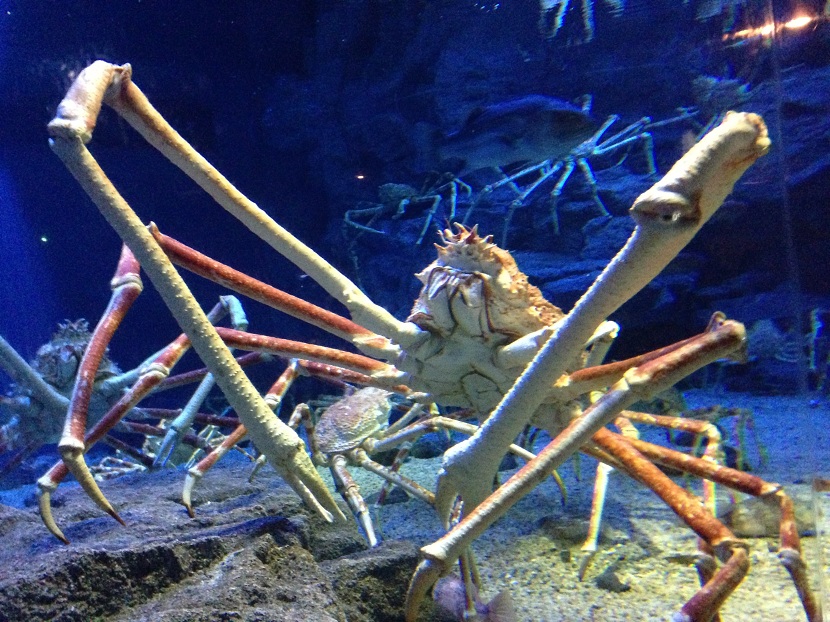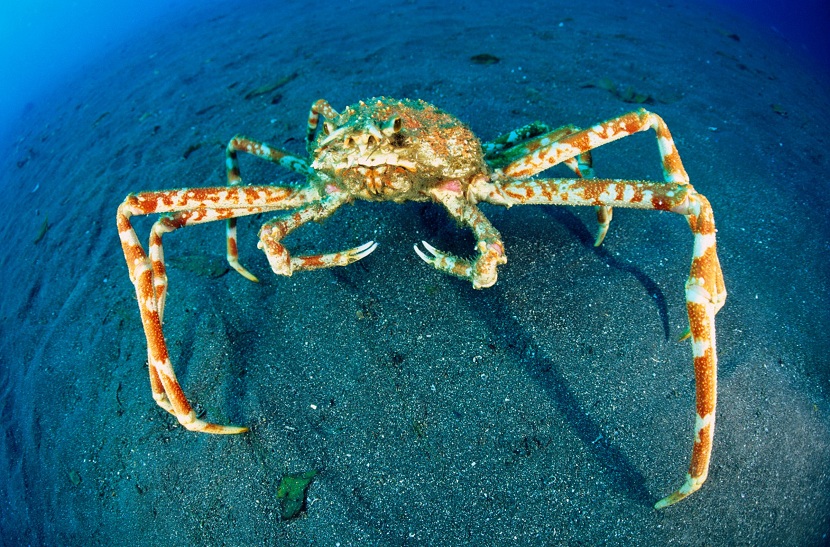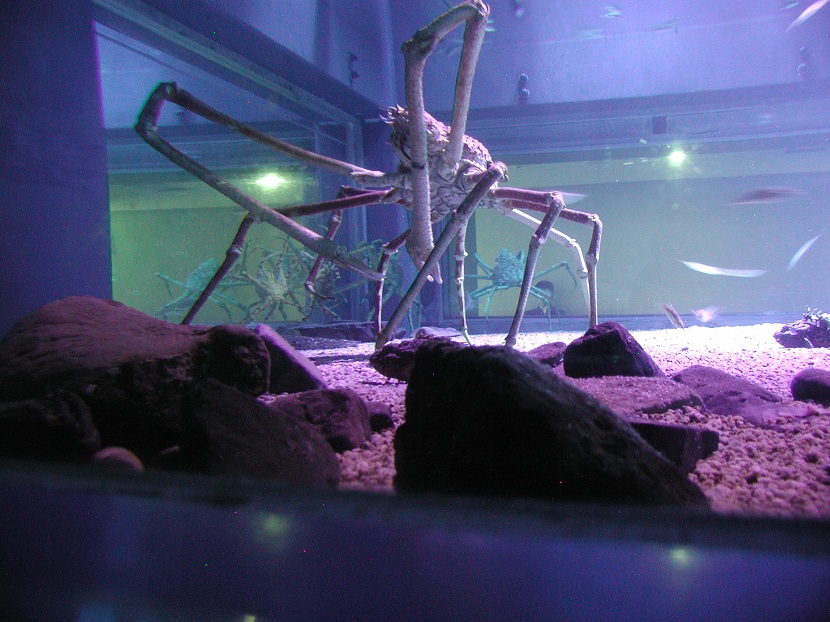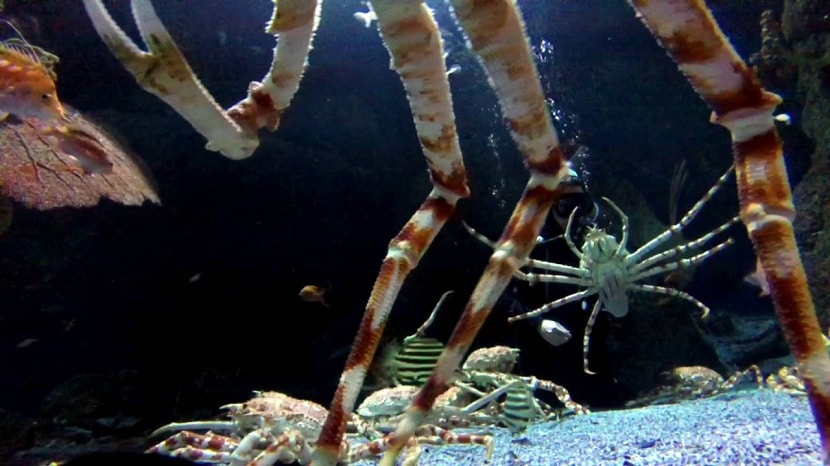
Many times you have heard the phrase "reality surpasses the fans." This is what happens when a person first sees the japanese spider crab. It is a crab that gets its name because it will resemble spiders. It is a rather curious crab whose characteristics we are going to delve into in this article.
If you want to know all the secrets and curiosities in addition to the way of life of the Japanese spider crab, in this post you can find all the information.
Key features

This animal gets its name because it looks a lot like the insect or known as a spider. Its body can reach a length of about 37 centimeters from its huge legs give it a total wingspan of up to 3,70 meters and reach up to 20 kilos in weight. It is known to be one of the largest arthropod motifs in the world. It is an invertebrate whose body is covered by an exoskeleton that is made up of a series of linear segments.
It is a totally blind crab, but this will not cause any problems for the animal. As we know, in nature animals adapt to the environment and change their way of acting in order to survive. In order to thrive in an environment where he cannot see, he has a powerful, highly developed hearing. In addition, it has some small ones that have the ability to capture sound waves from all over the ocean without using a real ear.
Capturing and viewing this species is quite a worthy undertaking. It is one of the crabs that has an exclusive culinary character in Asia. Asians are able to go to the very bottom of the sea to look for these crabs in order to place them in an exquisite way in the dishes. The legs of the spider crab can be more than two meters long. The legs that contain the tweezers are even longer than the rest. Its body in general has a triangular shape and makes this animal can reach a much larger wingspan.
According to scientists, its claws may be more powerful than a crocodile's jaw. This makes it become one of the most dangerous animals. It is a great predator and combines the claws as a lethal weapon, so few prey can escape its clutches.
Habitat and area of distribution

These crabs typically inhabit the depths with colder waters around Japan. In the depths a It is usually found in caves that are more or less 600 meters deep.
A very particular characteristic of the Japanese crab is the crypsis. It is a phenomenon that some organisms present that serves to go unnoticed by the senses of other animals. It is a technique very similar to camouflage and can be taken as a type of defense mechanism. In the case of this crab, this technique consists of adhering to remains that are found on the seabed. In this way, these objects are used to camouflage themselves. These adaptations can happen with him during a good season causes that, finally, they fall off and he has to replace them. If the environment of the crab must change, it also undoes its decoration piece and begins a new collection of remains to adhere to its body.
The closest this crab can be found to the surface is more or less 50 meters and only in the spring time. This is because the females rise higher to the surface to spawn. Therefore, it is unlikely that many of the stories that discredit this animal are true.
To protect this species from extinction, it has been prohibited to fish for Japanese spider crabs during the spring, since it is the spawning time. This animal they are not aggressive, so it serves as an ornamental purpose and can be perfectly raised in aquariums.
Japanese spider crab diet

Although many people have this animal because it would be classified as a human eater, this animal only feeds on dead animals and jellyfish. It could be defined as a merely scavenger diet. But nevertheless, let's say that their diet is omnivorous. This allows you to consume both animal and plant matter. Sometimes it can act as an eliminator of dead animals in the aquariums where it lives.
Thanks to its large legs, it can scrape the bottom of the deep in search of plants and seaweed. In this way, you can force a kind of opening in the shells of some unfortunate mollusks that are in your way. Once they have encountered this species of mollusks, they end up being eaten.
Under no circumstances can the Japanese spider crab be classified as a human eater. This is because, contrary to what is thought of this species, it has a fairly ductile character. Some people are quite afraid of this animal but it is mainly because of its appearance. People who have had direct contact with this animal say that it is not aggressive at all. Quite the opposite, has some rather tame demeanor. Sometimes he even allows himself to be caressed.
Reproduction of the Japanese spider crab
Their reproduction is sexual and oviparous. These animals have paired sex organs. This reproduction consists of the male carrying the female on top during mating. This process can take between 5 and 6 hours, but crabs can 3 stay in this position for up to 3 days later.
The females are the ones that carry out the laying attached to the pleopods until the eggs hatch. Males do not have a true copulatory organ but rather have a modified appendix to fulfill this function. Through this type of appendix, the male is responsible for transferring the spermatophore to the female. This is how the new offspring are formed. Their development consists of several larval stages.
I hope that with this information you can learn more about the Japanese spider crab and its curiosities.